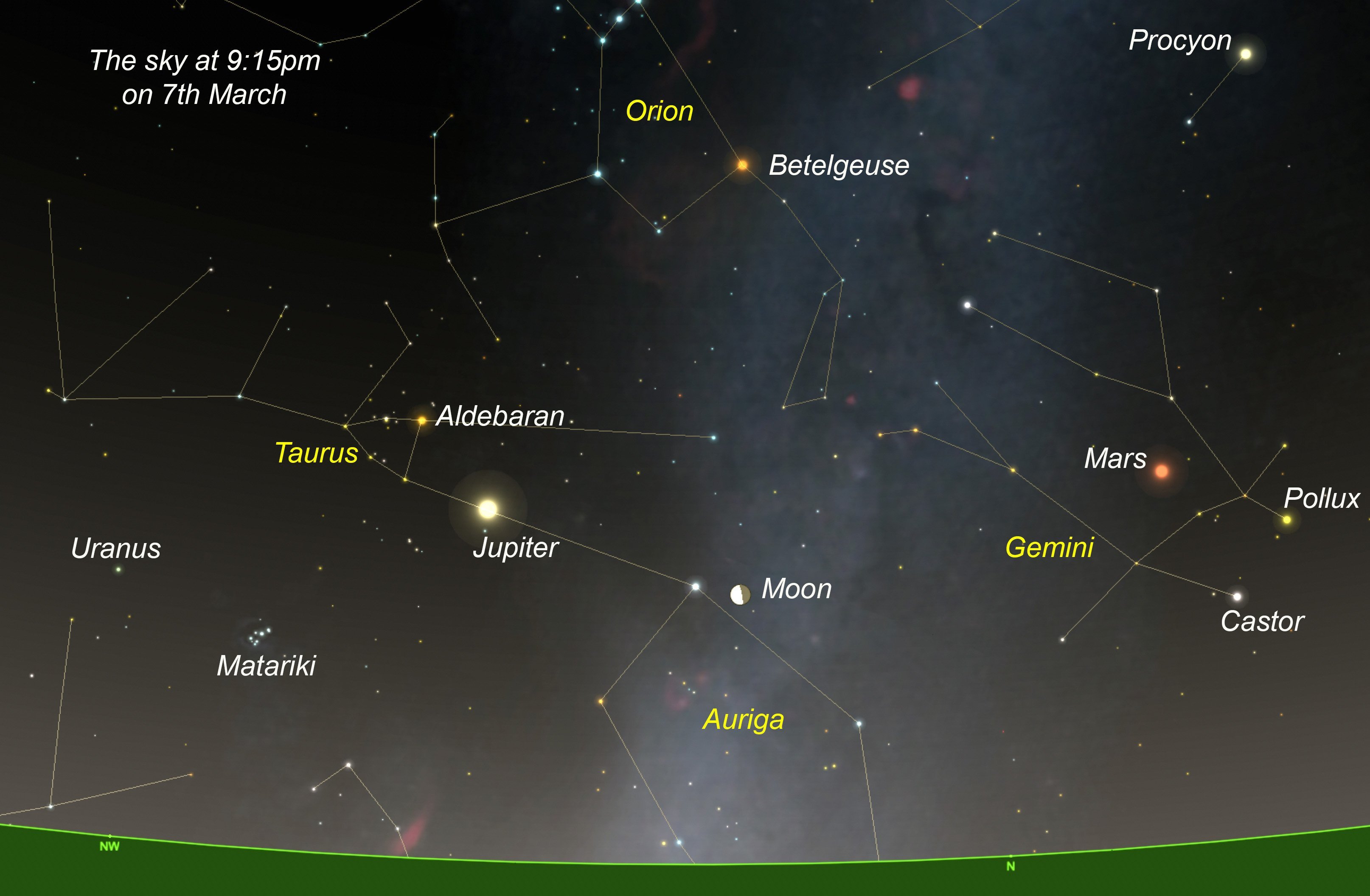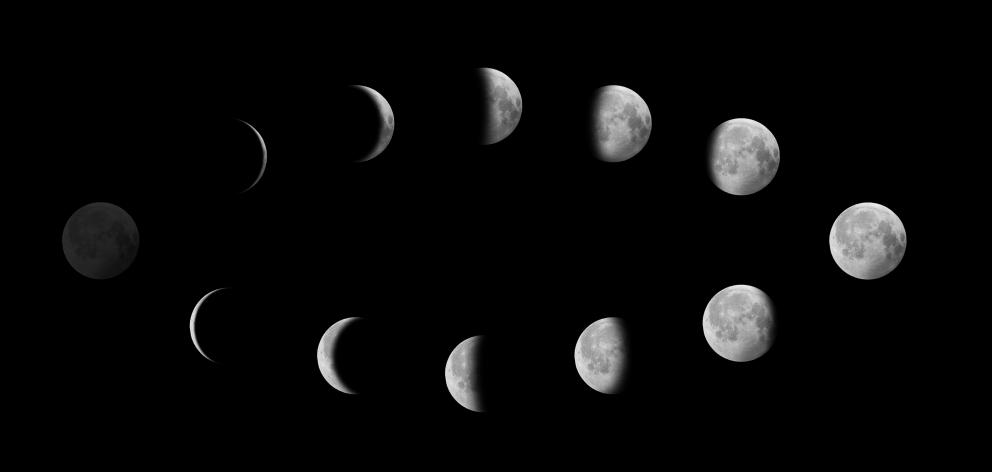

This sequential count of lunar cycles, called the Brown Lunation Number (BLN), began in 1923. ‘‘Lunation 1’’ started with the first new moon of 1923. This was the year when a theory of the moon’s motion developed by British mathematician Ernest William Brown was introduced in the American Ephemeris and Nautical Almanac, an essential reference for astronomers, surveyors and navigators.
This lunar numbering system continues to be a vital tool for astronomers, aiding in the efficient tracking of lunar cycles over extended periods and in various astronomical and calendrical calculations.
As the moon progresses through its cycle, it will reach first quarter on March 7. On this night, the half-illuminated moon is in the constellation Auriga, the Charioteer.
Unlike the well-known zodiacal constellations that define the sun’s annual path, Auriga sits outside this band. Despite its non-zodiacal status, it is home to several bright stars, including Capella, which, despite being incredibly bright never rises from latitudes south of Christchurch.

Jupiter, in the constellation Taurus, will shimmer with a golden-white glow, while Mars, in Gemini, will radiate its characteristic reddish hue. This contrast in colour is not just a visual delight - it mirrors the fundamental differences in the planets themselves.
Jupiter, a gas giant, appears golden-white because its thick atmosphere contains ammonia clouds that scatter sunlight in a way that favours these hues. Its immense size and high reflectivity make it one of the brightest objects in the night sky.
Mars, by contrast, owes its rusty-red appearance to iron oxide - essentially rust - on its surface. This rust absorbs blue and green wavelengths, reflecting red and orange tones instead. This means that when you look at Mars, you see the red colour that has fascinated stargazers for millennia.
For those stepping outside on Friday, March 7, this planetary alignment with the moon promises to be a splendid visual spectacle. I hope you enjoy it.











